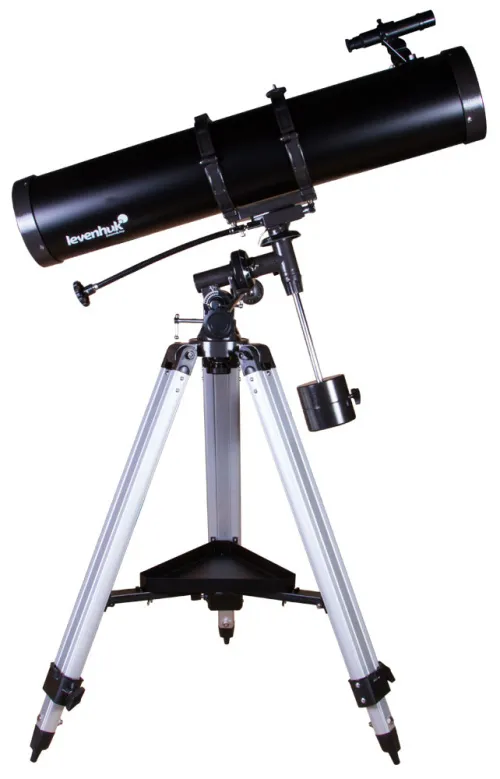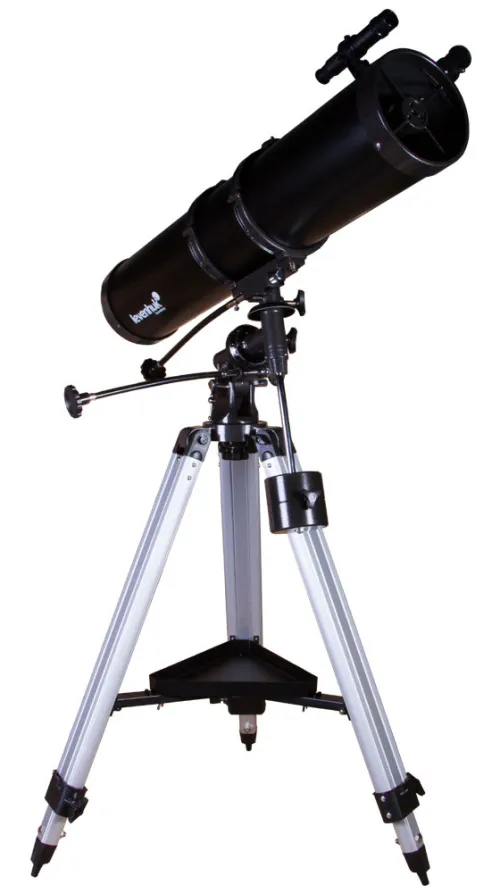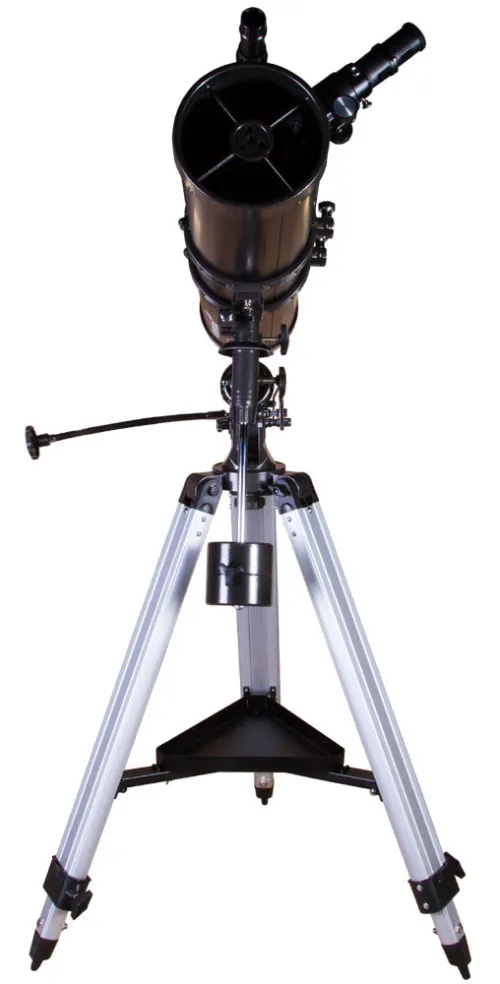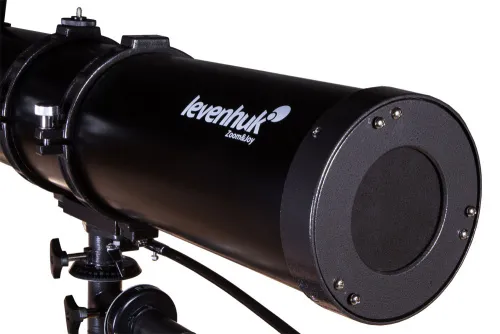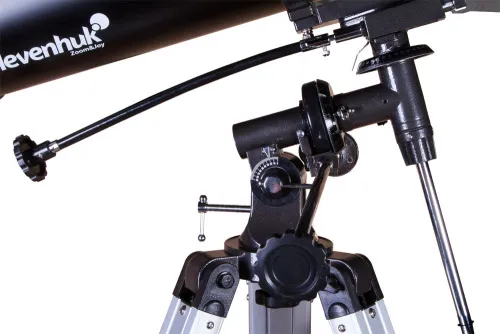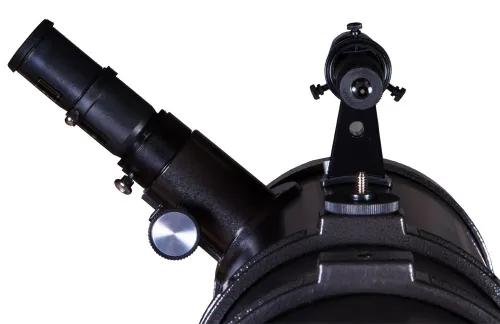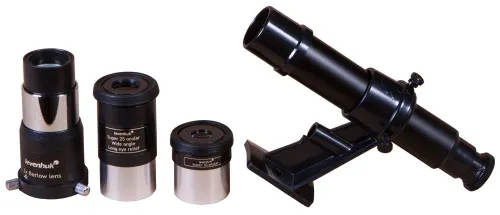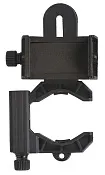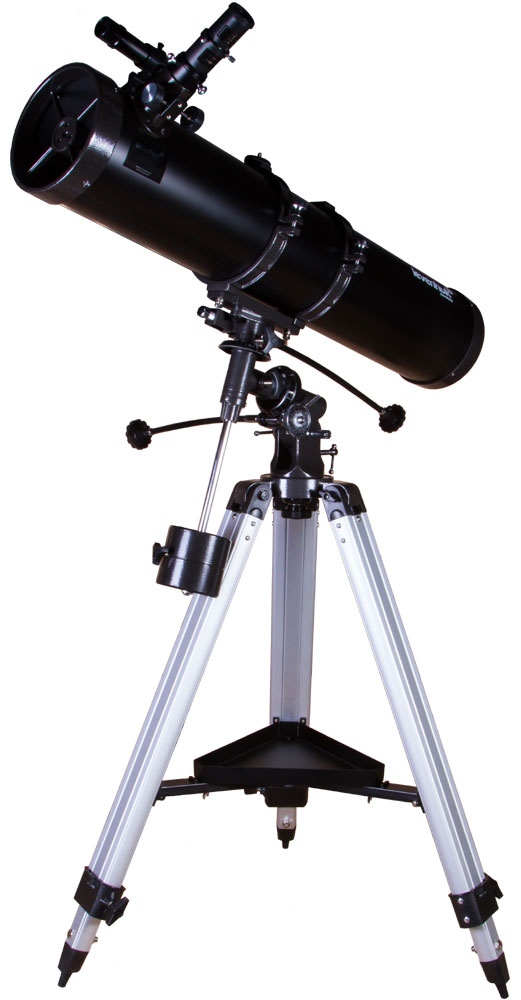Levenhuk Skyline PLUS 130S Telescope
Newtonian reflector. Aperture: 130mm. Focal length: 900mm
| Product ID | 72854 |
| Brand | Levenhuk, Inc., USA |
| Warranty | lifetime |
| EAN | 5905555002194 |
| Package size (LxWxH) | 108x50x26 cm |
| Shipping Weight | 17.9 kg |
Levenhuk Skyline PLUS 130S Telescope will help you discover the beauties of outer and deep space. It is perfect for exploring galaxies, double and single stars, nebulae, globular and open clusters, and it is also excellent for observing planets of the Solar system, or the Moon. It is suitable for detailed observations of Mars, Venus, Saturn, and Jupiter. All of the necessary optical accessories are included in the kit, so you do not have to purchase any additional items.
The optical tube is mounted on an equatorial mount operated with a slow-motion control knob. This type of the mount requires time for learning how to use it, but it is excellent for lengthy observations of the night sky. Celestial objects permanently move on the sky and, therefore, you need to move your telescope accordingly. An equatorial mount makes this process much easier.
Levenhuk Skyline PLUS 130S features a rich kit. Here, you will find everything necessary for successful observations: two eyepieces with different focal length, a 2x Barlow lens, an optical finderscope with a 6x magnification. You receive a sturdy and reliable aluminum tripod with an accessory tray together with your telescope.
You can put the telescope even on a rough surface due to its legs with adjustable height.
Features:
- Newtonian reflector on an equatorial mount
- Rich kit: two eyepieces with different focal length and a Barlow lens
- Ideal choice for deep sky exploring: you can observe all Messier objects and many NGC objects
- This telescope is designed for beginner astronomers
- A stable aluminum tripod with an accessory tray for keeping additional accessories
The kit includes:
- Telescope optical tube
- Equatorial mount
- Aluminum tripod with an accessory tray
- 6x24 optical finderscope
- SUPER 10mm (90x) eyepiece
- SUPER 25mm (36x) eyepiece
- 2x Barlow lens
- Slow-motion control knobs
- User manual and lifetime warranty
| Product ID | 72854 |
| Brand | Levenhuk, Inc., USA |
| Warranty | lifetime |
| EAN | 5905555002194 |
| Package size (LxWxH) | 108x50x26 cm |
| Shipping Weight | 17.9 kg |
| Optical design | reflector |
| Optical scheme | Newtonian |
| Optics material | optical glass |
| Optics coating | silicone dioxide |
| Primary mirror diameter (aperture), mm | 130 |
| Lens (mirror) shape | spherical |
| Focal length, mm | 900 |
| Highest practical power, x | 260 |
| Aperture ratio | f/6.9 |
| Resolution threshold, arcseconds | 1.1 |
| Limiting stellar magnitude | 12.5 |
| Eyepieces | SUPER 10mm (90x), SUPER 25mm (36x) |
| Eyepiece barrel diameter, in | 1.25 |
| Barlow lens | 2x |
| Finderscope | optical, 6x24 |
| Focuser | 1.25", rack & pinion, single-speed |
| Tripod | aluminum |
| Tripod height (adjustable), mm | 700–1270 |
| Accessory tray | ✓ |
| Telescope control | manual |
| Mount | equatorial, EQ2 |
| Optical tube material | aluminum |
| User level | beginners, experienced users |
| Assembly and installation difficulty level | complicated |
| Observed object | deep-sky objects |
Convenient diagrams that describe how to install additional accessories on refractors and catadioptric telescopes
Find out how to assemble a telescope on an example of the Levenhuk Skyline 90x900 EQ telescope
This short guide will help you avoid typical mistakes and learn more about telescope and mounting types
The basics of astronomical observations for beginners
In this article we have gathered answers to some of the most frequently asked questions about telescopes
The most interesting celestial objects you can observe with Levenhuk telescopes
How telescopes work?
You can actually perform observations from your balcony!
All about telescope sizes, types, magnification, and mounts
Learn how to set up and use the telescope properly
Astronomy in light-polluted skies. Find out what you can observe in the city
Read an interesting comprehensive article on telescopes for little astronomers
The pictures are made with Levenhuk telescopes
Celestial objects you can observe with telescopes of different apertures
Colored and vivid images of galaxies, planets and star clusters entrance everyone who is fascinated by boundless space
Find an interesting review on the history of the changes to a refracting telescope
To make the process of choosing a telescope easier, we will tell you about the characteristics of the most popular types of telescopes today
Learn everything you need to know about refractor telescopes to make the right choice


